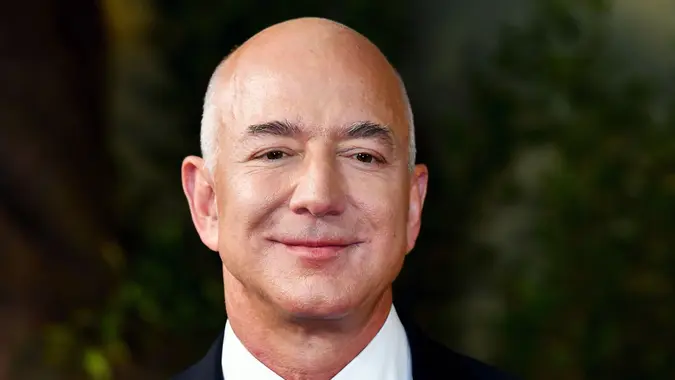Americans Want To Reduce Debt in 2025, but Key Barriers Stand in Their Way

Commitment to Our Readers
GOBankingRates' editorial team is committed to bringing you unbiased reviews and information. We use data-driven methodologies to evaluate financial products and services - our reviews and ratings are not influenced by advertisers. You can read more about our editorial guidelines and our products and services review methodology.

20 Years
Helping You Live Richer

Reviewed
by Experts

Trusted by
Millions of Readers
For 42% of Americans, lowering debt is the biggest financial priority in 2025, according to a recent report by the CFP Board, the nonprofit credentialing body for U.S. financial planners.
Saving up for a big-ticket purchase and planning for retirement nabbed the second and third spots on the list of 2025 financial priorities for Americans.
The CFP Board’s managing director of research, Kevin Roth, Ph.D., told to GOBankingRates in an email that for “many Americans, debt is a major impediment to achieving their financial and life goals. Essentially, you are taking today’s income to pay for purchases you made yesterday.”
He emphasized that there are different types of debt.
“It is one thing to take on debt to replace a dying refrigerator; it is quite another to have credit card debt from a lunch you ate six months ago,” he wrote.
GOBankingRates broke down the major debt barriers standing in the way of Americans’ financial plans for this year.
Common Types of Debt
To what extent are Americans struggling with debt? The study found that five out of six “American households report holding at least some debt,” with credit cards and mortgages being the leading types of debt, at 60% and 57%, respectively.
Credit card debt puts you at risk of high, compounding interest rates, Roth explained.
“If you make only the minimum payment each month, it could literally take years to pay back the money on a single purchase,” he wrote.
The study also revealed that the most difficult category of debt for Americans to tackle is medical debt — 70% of those with “substantial medical debt” indicated that it’s challenging for them to handle it.
“Medical debt can be even harder to escape due to the large amounts of money owed, often causing people to delay necessary future medical care,” Roth noted.
The Ramifications of Debt
Roth explained that debt can have severe ramifications for people in the long term.
“If you have to dedicate a significant amount of your current income to paying back debt incurred on yesterday’s purchases, that affects your ability to save and plan for the future,” he explained. “Having high debt payments means you may not be able to fund your children’s education, buy a home, save for retirement or be prepared to cover unexpected emergency expenses.”
How To Tackle Debt
According to the report, roughly 90% of Americans indicated that they have “at least one financial obstacle that may hinder their 2025 resolutions.” Some of the main barriers include too many expenses (38%), too much debt (30%) and not having enough income (28%).
Roth wrote that the biggest barrier Americans face in trying to reduce their debt is a lack of enough income to make their monthly debt payments, in turn “forcing them to make difficult choices between paying debts or paying for essential living expenses like food, rent, and utilities — which often leads to even more debt.”
However, he explained that people can take steps to turn their situation around.
“Americans can overcome debt barriers by creating a budget, prioritizing essential expenses and reducing discretionary spending,” Roth wrote. “Focus first on paying down high-interest debt, seeking lower interest rates through consolidation and building an emergency fund. Increasing income through side gigs or skill development can also help you regain financial stability.”
In fact, the study found that 90% of Americans are taking action to improve their debt situation, with 44% decreasing their discretionary expenses, 41% forming and following a budget and 39% cutting costs when they spend on necessities. These steps, Roth noted, are “all key to managing debt.”
“Your strategies should go beyond paying off current debt, with the goal of avoiding future debt and maintaining financial stability,” the expert said.
Turning to a financial planner is another step people can take to tackle their debt. The study found that one out of four Americans “are seeking advice from a financial planner on how to manage debt.”
Roth stressed that the “best time to seek a financial advisor is now.”
“Partnering with an ethical, competent advisor who is dedicated to work in your best interest can help you identify life goals and address financial challenges,” he wrote. “Find an advisor you trust, and make sure they understand your situation, prioritize your best interests and align with your objectives.”
More From GOBankingRates
 Written by
Written by  Edited by
Edited by 

























